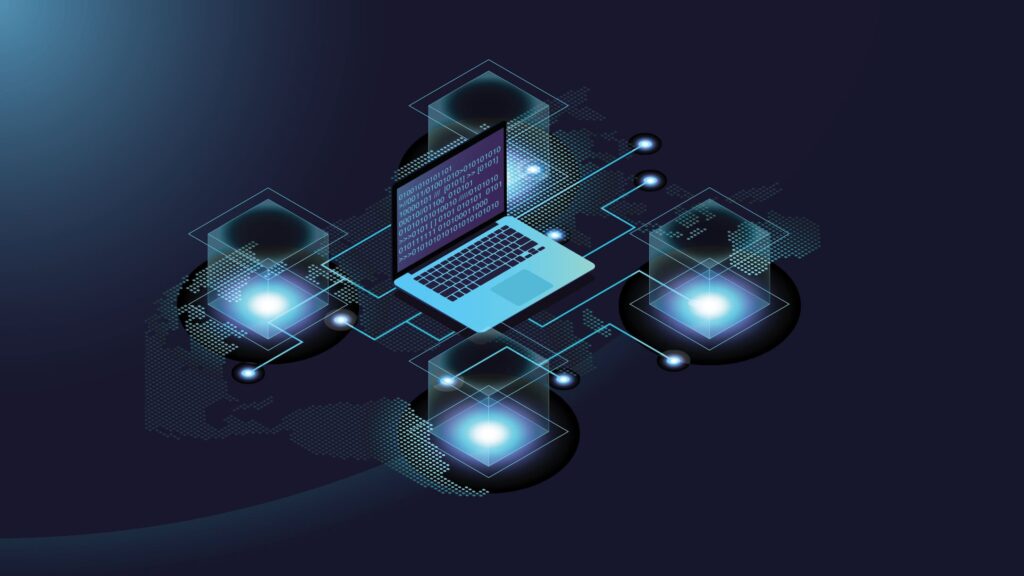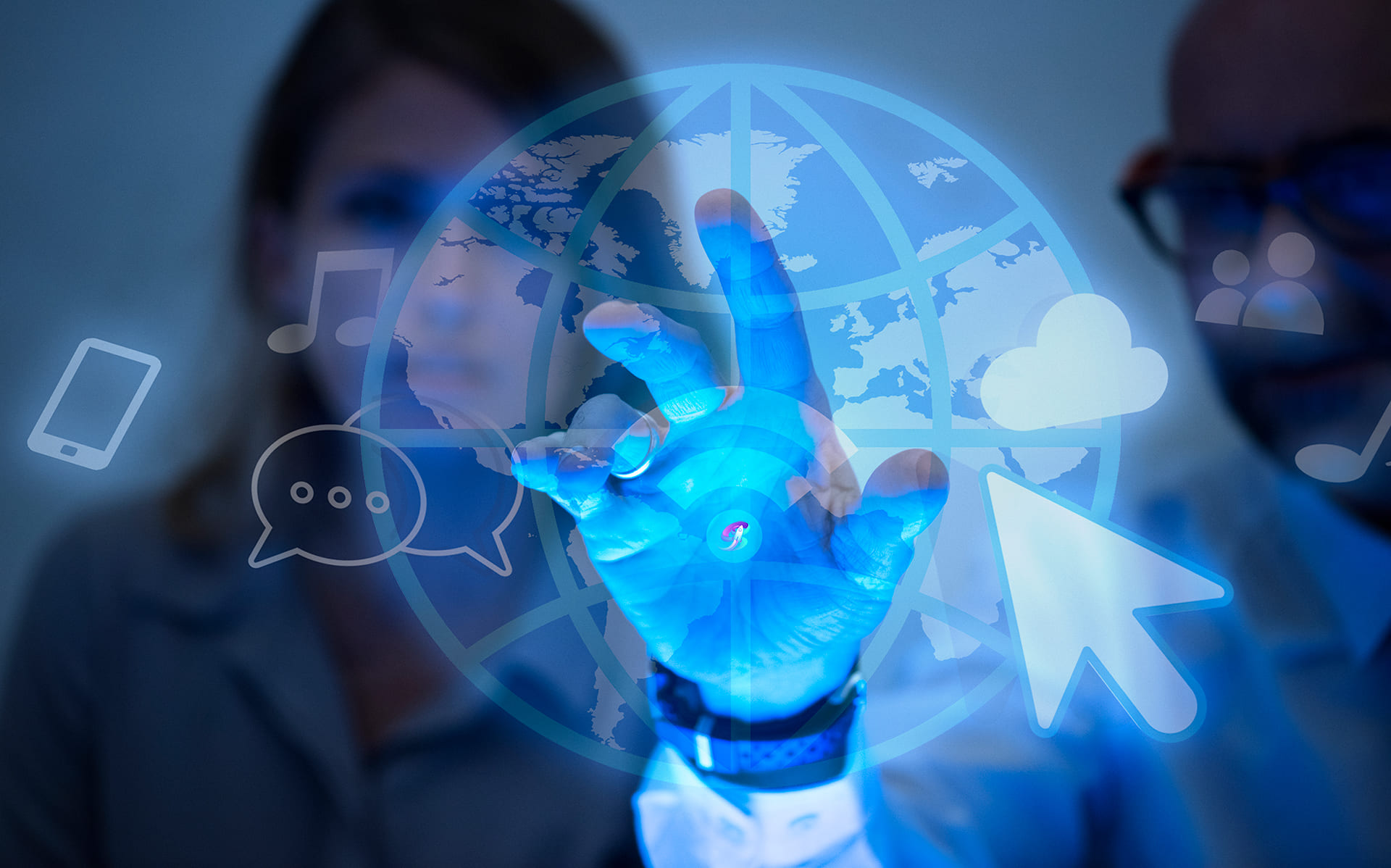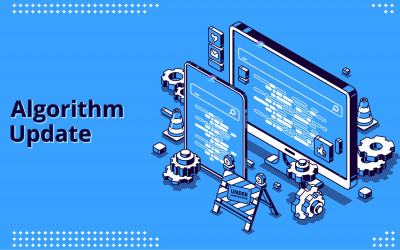Web 3.0 is the next big thing everyone’s talking about after everything related to Crypto i.e. Metaverse, NFTs, etc being trending in 2022. It’s getting popular with the name of Decentralized Web! While the other 2 versions of the web focused on user experience, web 3.0 also has a major focus on the privacy of the users. To understand all this, you first have to understand what it is and how it’s going to affect our future!
Web 3.0 (also known as web3) is the third iteration of the Internet that interconnects data in a decentralized way to deliver a faster and more personalized and privacy-ensured user experience. It is getting built using artificial intelligence, machine learning, and the semantic web, and uses the blockchain security system to keep your information safe and secure than it ever was on Web 2.0.
To make the understanding process simpler, always keep these terms in mind: –
Crypto: Cryptocurrency
Web 2.0: Current iteration of the web that we access
Decentralized: Transfer of control and decision-making from an individual, organization, or group to a distributed network

History of Web and Definition of Web 3.0
Let’s start with the timeline of the web itself. It started with the first iteration in 1991 till 2004. Web 2.0 is the current iteration that was deployed in 2004 and is being used right now. There have been a lot of improvements from 2004 to now, and the web has become a necessity in everyone’s life now. Don’t believe that? Then comment below and let us know where you think anyone is living without the internet peacefully! 😛
What started with a bunch of computers connecting together became the “World Wide Web” and is running the world now. Web 3.0 hopes to take advantage of every device that’s connected to it! Sounds pretty cool, right? It really is! The same thing is currently being done with cryptocurrencies and it’s going great so far as we all can see. So, as a concept, web3 is not new. It’s built on the concept of edge computing and uses platforms built on top of the blockchain, cryptocurrency, NFTs, etc.
Conceptually, it incorporates “decentralization” at the primary level and is in most ways which are the opposite of Web 2.0. Web 2.0 has data and content centralized through servers and data centers – which is referred to as the cloud. We are still using Web 2.0, and Web 3.0 is currently in the making.
The Need for Web 3.0
Gradually, Web 2.0 became obsolete towards the end of 2012, and people were starting to be aware of web 3.0. The tech giants (You should already know who I’m talking about when it comes to privacy invasion) got paranoid over the fact that all the tech giants have monopolized the web already and they really don’t want users to have that much privacy! Sounds like a small deal, but if you think deeply about how much data these big tech giants have been holding for each person and what they can do with it, you’ll get scared too!!
There already have been so many conflicts with Facebook regarding what’s good for the public v/s what’s good for Facebook.
All the techies that know about the problem are constantly helping out with the creation of Web 3.0 and they want to solve the problem of privacy that’s been there for ages now. Everyone you and I know, has been using smartphones with Android and iOS, and they all come with Google Now and Siri, which almost always hear what you’re speaking. It’s being used as a way to personalize ads for now, but ever wondered what would happen if any of the big tech giants turns to the dark side? (Yes the star wars way!).
Layers of Web 3.0
The whole concept of Web 2.0 is revolving around the introduction of mobile, social, and cloud technologies. Web 3.0 takes it further and expands it to these 4 major laters
- Edge Computing: Edge computing is a distributed IT architecture that processes the client data at the edge of the network, as close to the source as possible. This simply means making use of all devices connected to the web.
- Blockchain: Blockchain is the foundation of cryptocurrency, and it will also be the foundation for web3. A blockchain is a decentralized behavioral model that deploys intelligent (smart) contracts. These contracts establish the logic of an application for web 3.0.
- Decentralization: Decentralized data networks enable various data generators to sell or trade their data without losing ownership, risking privacy, or relying on intermediaries. As a result, decentralized data networks tend a long list of data providers in this ever-growing data economy.
- AI and Machine Learning: Artificial intelligence and machine learning algorithms have advanced to make valuable, and sometimes life-saving, predictions and acts.
Role of Ethereum (ETH) in the development
Unlike Web 2.0 applications like Facebook, Instagram, Twitter, Medium, etc, Web 3.0 eliminates the middle man. There’s no single database that stores the application state, and there’s no centralized web server where the backend resides.

Instead, you can use blockchain to build apps on a decentralized machine and anonymous nodes on the internet maintain them. That’s where the Ethereum Virtual Machine comes into the picture. The purpose of these machines is to run the logic defined in the smart contracts. They process the behavioral changes taking place on the state machine.
The front end defines the logic and the front end connects with smart contracts which makes the whole concept sustainable.
Challenges Right now
The biggest challenge is that the tech giants don’t want to lose their monopoly over the web. But I personally think it’s pretty much inevitable now. The challenges don’t just end here though. There are a few more that are slowing down the adoption/deployment.
- Need for Recreation of Web 1.0 Apps: Web 3.0 is using a whole different technology that is nowhere related to the previous or the current iteration, hence they can’t be migrated to web3 and have to be rebuilt from scratch.
- Widespread Adoption: This technology is the next step towards the future, and it’s naturally going to face issues such as tech advancements being needed for the adoption of it.
- Complicated for new users: Web 3.0 is a difficult-to-understand technology for a new user, which makes them not want to. It is a combination of primitive web tools with cutting-edge technologies, such as AI and blockchain, as well the link between users and increasing Internet usage.
Verdict
So, I’ll be very forward. The techies might be right on this one, and it could be the next big revolution after all. There are definitely a lot of challenges that are going to be there, but ultimately, the adoption will be happening.
There’s a huge need to end the monopoly of the web of the tech giants. It could also have some complications with cybercrime. But I’m sure the developers are going to be taking steps to avoid that as much as possible.
We all need to be aware of this, and that’s exactly why I’ve written this article. We are living in a world where tech controls most of our lives, and we’re continuously moving towards it and not backward. It’s a world where only the smarter and updated ones survive, so let’s get smarter!





From all the articles about Web 3.0, this article has been the most explanatory. Gonna share this with my teammates.
Appreciate the research behind this article!
Next revolution – Web 3.0 Loadingggg!!
Informative Blog.
Keep up te good work team.
I was excited to discover this website. I want to to thank you for your time for this wonderful read!! I definitely liked every part of it and i also have you book-marked to look at new things on your website.
Great post.
Great Post Team!